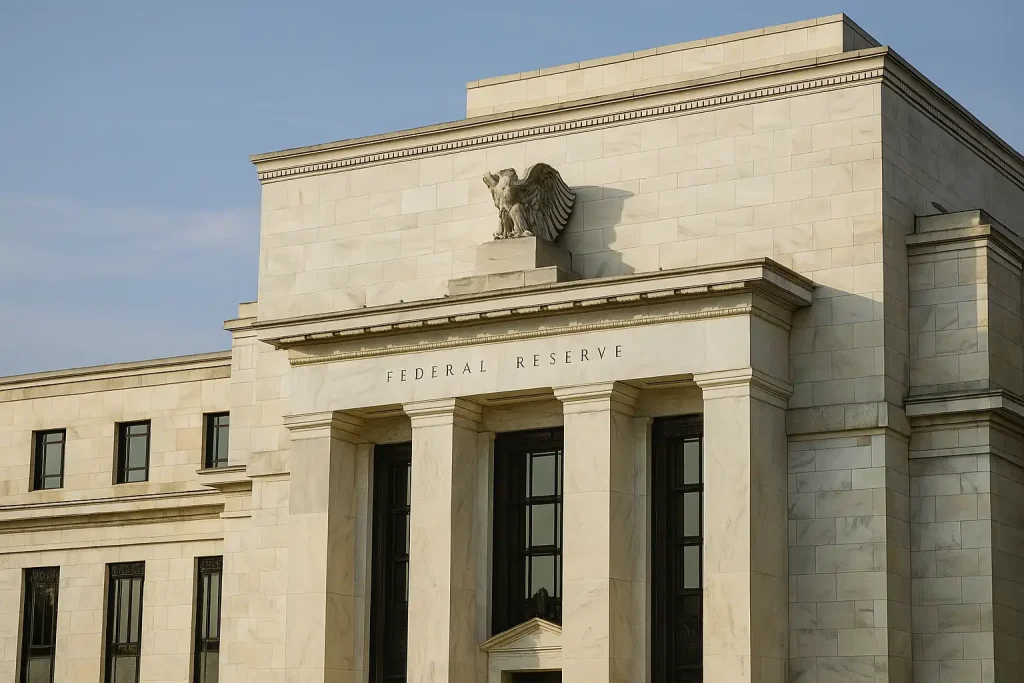The role of Regional Federal Reserve Banks in shaping U.S. monetary policy is crucial, yet often underappreciated. These banks serve as the operational arms of the Federal Reserve System, each covering a specific geographic area. They provide vital economic data and insights, influencing policy decisions that affect the entire nation’s financial health.
Regional banks uniquely blend local insights with national monetary objectives, a task that requires aligning diverse economic needs. The influence of these banks is profound, as they liaise between the Federal Reserve Board and local economies. Through research and policy recommendations, they help calibrate decisions that impact interest rates, inflation, and overall economic growth.
The influence of regional Federal Reserve Banks on policy formation

Each Regional Federal Reserve Bank plays a significant role in formulating U.S. monetary policy. They gather and analyze economic data pertinent to their regions, providing insights into local economic conditions. This localized information informs the Federal Open Market Committee (FOMC) meetings, where national monetary policies are shaped.
The banks contribute to discussions about inflation and employment, two key aspects of the Federal Reserve’s dual mandate. By voicing regional economic dynamics, they help the FOMC tailor monetary policy to be more effective. This involvement ensures that the economic strategies adopted not only address national objectives but also the specific challenges faced by different areas of the country.
Collecting regional economic insights
Collecting detailed economic data is at the heart of what regional Federal Reserve Banks do. They analyze employment trends, consumer spending, and business activities within their jurisdictions. This data collection informs their reports to the Federal Reserve Board, ensuring decisions reflect true regional economic conditions. Such localized insights allow for more precise policy adjustments.
For example, if a particular area faces increased unemployment, the insights from that region could lead to interventions tailored to stimulate job growth. Conversely, if a region experiences inflationary pressures, it may prompt the banks to recommend policies to stabilize prices. This data-driven approach ensures that U.S. monetary policy can adapt flexibly to diverse regional challenges.
Extending influence beyond regional boundaries
While Regional Federal Reserve Banks focus on local economies, their influence extends to national and even global economic policies. Their data and analyses contribute to crafting policies that ensure the stability of the U.S. economy in the global market. By addressing local issues, they indirectly influence international economic trends, as the U.S. market has substantial global impact.
Their participation in global economic dialogues often brings important local perspectives to broader discussions. This cross-border influence highlights the importance of their policies in both domestic and international economic arenas. By aligning regional insights with national goals, these banks ensure that the U.S. maintains a strong and balanced position in the global economy.
Practical implications of regional economic policies
The practical implications of regional Federal Reserve Banks’ policies are vast, impacting everyday life. Their insights lead to decisions that affect interest rates, which in turn influence borrowing costs for consumers and businesses. This can drive economic activities such as housing investments and small business growth.
Moreover, their role in managing inflation affects the purchasing power of households, making daily necessities more affordable. By considering diverse economic conditions, they help sustain stable economic growth, benefiting communities nationwide. Through strategic policy recommendations, they ensure that U.S. monetary policy remains responsive and effective.
The overarching impact of regional banks on monetary strategy
In conclusion, Regional Federal Reserve Banks play a pivotal role in shaping U.S. monetary policy by combining local insights with national strategies. Their active participation ensures that monetary policies address both regional and national economic challenges effectively. They are indispensable in maintaining the equilibrium necessary for economic prosperity across the country.
Their influence extends beyond regional concerns, impacting national and global economic stability. By contributing to informed policy-making processes, they help navigate complex economic landscapes. The integration of regional perspectives ensures that the U.S. economic policy framework remains robust, adaptable, and comprehensive, fostering a resilient economy for future generations.
